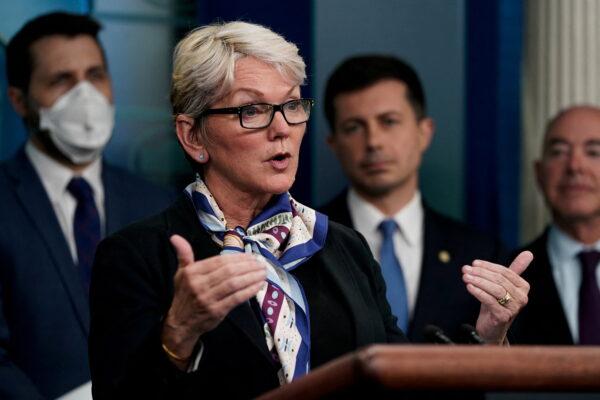In the week ended Sept. 9, the nation’s emergency crude stockpile totaled 434.05 million barrels. It hasn’t been that low since early November 1984, when the SPR hovered at around 436 million barrels.
The recent withdrawal was also the sharpest since May, as it included 6.3 million barrels of sweet crude and roughly 2 million barrels of sour crude.
In March, President Joe Biden unveiled a plan to release 1 million barrels per day (bpd) from the SPR over six months to lower energy prices. While the current initiative is scheduled to end next month, the White House is weighing its options, including extending the program beyond October and possibly refilling reserves.

While the current initiative is scheduled to end in October, the White House is considering extending the program to sustain the trend toward lower oil and gasoline prices, Granholm said.
Energy analysts warn that this move is a signal that the administration thinks its releases will “backfire.”
“In addition to refilling storage, which has been heavily tapped into this year, the move would reportedly also be taken to try to support prices at lower levels, so as to try to ensure that we continue to see growth in U.S. oil output,” he said. “U.S. SPR releases have helped out the market significantly this year; however, these releases are set to come to an end in October.”
Moreover, in a March 19, 2020, call with reporters, then-Energy Secretary Dan Brouillette argued that the proposal would send “signals to other investors that they have extreme confidence in their operations.” But Senate Majority Leader Chuck Schumer (D-N.Y.) rejected the idea, calling it a bailout for the oil sector.
What Oil Investors Are Watching
In addition to the latest SPR news and developments, energy markets are paying attention to the International Energy Agency’s (IEA) recent demand outlook.According to the report, researchers anticipate that global crude year-over-year demand growth would “grind to a halt” in the fourth quarter, and supply will outpace demand through the second quarter of next year. It trimmed its 2022 demand growth estimate by 100,000 barrels, to 2 million bpd.
The IEA listed a slowdown in countries belonging to the Organization for Economic Co-Operation and Development (OECD) and persistent weakness in the Chinese economy.
“Slightly higher OPEC+ volumes and slower demand could see a much-needed global stock build during the rest of this year and into the first half of 2023,” the report stated. “The global economy is on the cusp of a recession.”
James Mick, managing director and senior portfolio manager with TortoiseEcofin, thinks that China’s demand for crude oil in 2022 might contract for the first time since 2002.
The Organization of the Petroleum Exporting Countries (OPEC) stuck with its demand growth forecast for 2022 and 2023. The cartel projected on Sept. 13 that demand would rise by 3.1 million bpd this year and 2.7 million bpd next year, unchanged from its previous estimate.
Overall, it forecasts global oil consumption to average 102.73 million bpd next year, slightly above the pre-pandemic level in 2019.
In the week ended Sept. 9, U.S. crude stocks surged by 2.442 million barrels, while gas stocks fell by 1.767 million barrels. Distillate and heating oil inventories were relatively flat.





